Hantu Blog Celebrates 9 Years of Public Education
 March 29, 2012
March 29, 2012
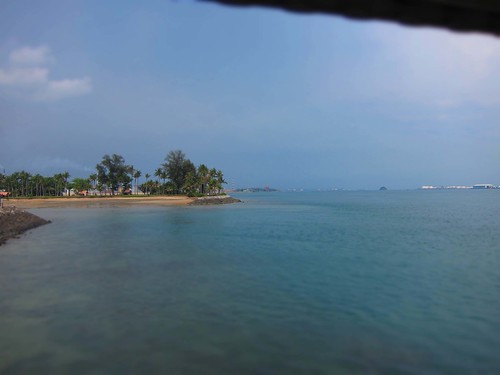
Quiet and clear horizons: Yes, this is Singapore. Photo: Jimmy Goh/The Hantu Blog
The success of the Hantu Blog definitely has to be attributed to its handful of dedicated and tenacious volunteers. What began as a humble blog to document and share experiences and photographs from individual divers who visited Pulau Hantu, has grown into a long-term effort to raise public awareness about our reefs through dive trips, lectures and roadshows for the public. Today, we celebrate the change that a few good people are capable of when they come together to work in concert.
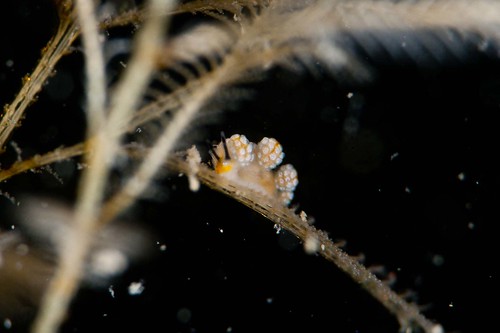
A tiny Doto nudibranch perched on a Giant hydroid. Photo: Jimmy Goh/The Hantu Blog
Interest in diving and discovering Pulau Hantu and local reefs has grown over the past nine years. During its founding years, I struggled to convince just a few divers to come out with me for a dive trip at Pulau Hantu. I could hardly find enough divers to fill up a boat, so it often meant that I had to make arrangements with other dive operators to share their vessel as and when they went out to sea. Today, our dive boat is filled up many months in advance, and we often have to turn down many divers. I believe that this change has happened, not only because there is an increased awareness today, but because for a long time, people have desired to get out and visit Singapore’s reefs, it’s just that they didn’t know how, and there weren’t good people (read: talented Hantu Blog volunteers) to guide them along their discovery process.
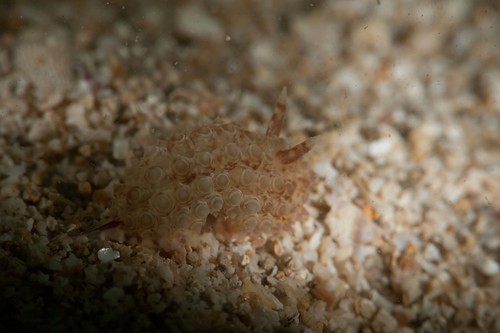
Sand or Sea Slug? An untrained eye would have easily overlooked this camouflaged critter. Photo: Jimmy Goh/The Hantu Blog
I still remember the first time I dived at Pulau Hantu. I didn’t see much and wasn’t told what to expect. I was basically thrown into the water and if I didn’t see anything, it was because “there’s nothing to be seen.” Evidently, this was far from true! Like a child in a brand new world, having a good parent or guide to show the way along can make such a difference! The Hantu Blog volunteers have not only been good reef guides, they have also been unknowing change-makers. Though chatting with members of the public that join us for our dives, they have helped to re-shape the attitudes of divers from Singapore and around the world – it is possible to dive in Singapore, and it is possible for heavy development and a fragile ecosystem to exist side by side.

Slender ceratosoma nudibranch. Photo: Jimmy Goh/The Hantu Blog
The “visibility issue” is more about an attitude than a physical barrier. I like to liken the experience of diving in low visibility to walking in the forest on a rainy day. Rain can make conditions a little more challenging, but it certainly doesn’t mean that there is nothing in the forest. The same goes for “diving in the muck”. Divers who frequent Singapore are more tuned to slow down and observe instead of drift by and overlook. Most of our reefs are small and do not go on for kilometers and kilometers, so divers need to employ different techniques to dive comfortably and efficiently. Because the visibility is low, divers often have to get closer to the reef to see and photograph the critters, in order to do so without crashing into the reef requires good diving skills like hovering and buoyancy control. Nurturing these skills can help you overcome any discomfort of diving in low visibility waters. Like any sport, being able to do it more efficiently allows for a more comfortable process.
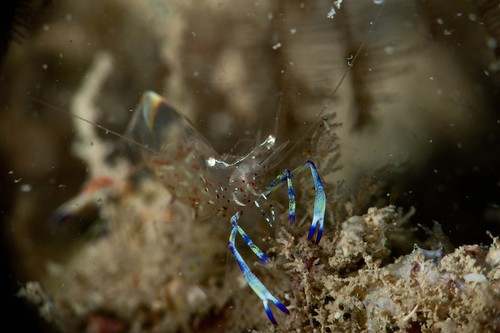
A transluscent shrimp gives its position away with its bight neon-blue pincers. Photo: Jimmy Goh/The Hantu Blog
The Hantu Blog has trained and worked with many generations of volunteers over the years. Each new generation brings with it new values and attitudes. Part of the Hantu Blog’s success has to be attributed to the attitudes that these volunteers bring to the Blog. Each generation has brought new ideas on how to improve and develop the work of the Blog and incorporating these values has enabled volunteers to have a sense belonging because this is something that they have helped to create. Much of what goes with the Blog remains unseen. Volunteers plan their schedules months in advance to ensure that we always have enough manpower every month to lead trips for the public. Being able to watch the Blog grow with its volunteers has been a very inspiring process for me. With their many talents and skills, the volunteers have taught me so much over the years, and while I was the one that started this Blog, they are the ones who have kept it alive.
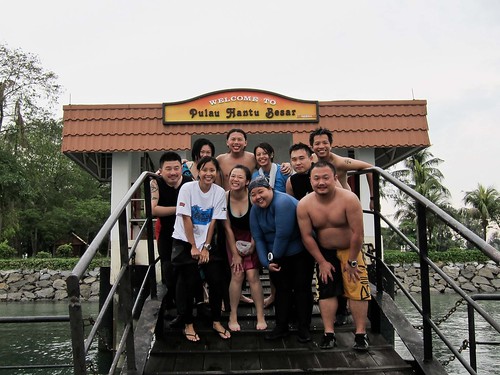
The Hantu Blog volunteers with new and regular divers from the public and marine biologists. Photo: Skipper, Mr Yeo
A tribute also has to be made to the many skippers or “boatmen” that have worked with us over the years. The Hantu Blog continues to use traditional bumboats to lead our dive trips. We do this to give divers a real sense of local diving. Some divers have asked if we do this to “keep prices down”, that thought never occurred to us because prices (compared to fiberglass dive boats) are actually the same. What we support through diving with local boatmen is years of experience in local waters. No matter how high tech the boat, no technology can match the skill and knowledge of our skippers who collectively have had more than 150 years of navigating our islands. All these years spent out at sea also mean that they have a tremendous amount of knowledge to share with us. If you’re ever on a dive trip with us, feel free to speak to our boatmen about what the islands were like in the 50s and 60s. Ask them how the coastline has changed and what unique experiences they have had out at sea. Their stories are priceless, and this is the reason we have them on our team.

Our trusted Skipper, Mr Yeo.
Finally, YOU. You, are the reason we exist in the first place! Thank you for reading our Blog and for telling your friends about us. Thank you for choosing to dive with the Hantu Blog when you dive locally and for supporting our work. Your contributions and participation has allowed us to dive and explore our islands on a regular basis, and to share what we have learned with some who might never have the chance to go out and visit our reefs in person. We look forward to diving with you over many more years, and are eager to discover more wonders about our local reefs with you!
 Posted in
Posted in 



 content rss
content rss
COMMENTS